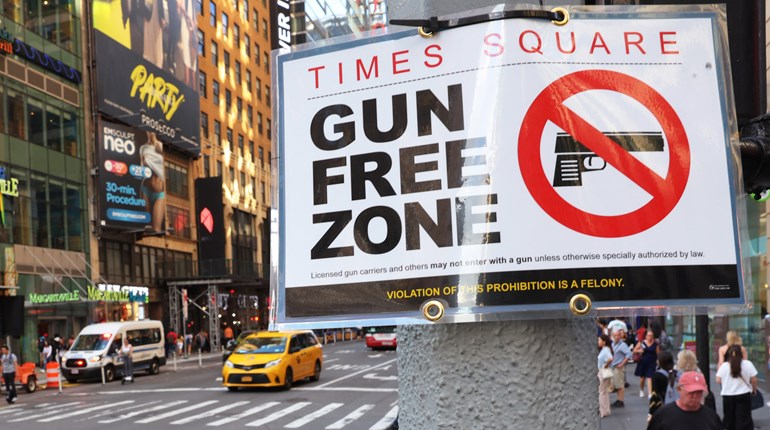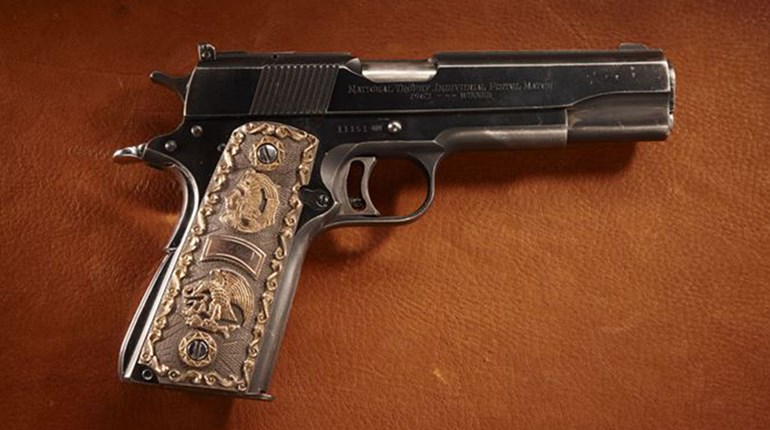
In 1986, only Vermont allowed concealed carry without a permit. A few other states issued permits fairly, but most other states refused to issue permits or only issued them arbitrarily to people the permitting authority decided had an unusual “need” to carry. But, by 2021, thanks in large part to four decades of tireless work by the NRA and members of this association, the situation has completely reversed.
Today, 42 states basically respect this constitutional right. In three states (Hawaii, Maryland and New Jersey) the right is still largely denied, and in several others (California, New York, Rhode Island, Massachusetts and Delaware), the right is too often denied by local officials in many cities or counties. Still, we’ve come a long way and are still fighting.
As this was going to print, “constitutional carry” was the law in 21 states, most recently in Texas. Could anyone have imagined that in 1980? Well, yes, actually—the NRA and its members did!
To see this success another way, consider that a September 2020 report by the Crime Prevention Research Center (CPRC) found that, in 1999, there were 2.7 million Americans with concealed-carry permits. As of the early 1980s—before reform laws were enacted in large states such as Florida, Pennsylvania and Texas—the number of permits was likely under a million.
By 2020, the number of Americans with permits had grown to over 20 million, according to the CPRC data. The percentage of adults with carry permits was 1.3% in 1999, but 7.6% in 2020. The percentage of adults who carry is, of course, likely far larger than 7.6%, as no permits are needed in the states allowing constitutional carry.
The exercise of the right to keep arms has also been substantially increased. Exact data on U.S. gun ownership does not exist, because—unlike many other nations—the United States does not have a central government gun registry. You can thank the NRA for that, because the 1986 Firearms Owners’ Protection Act forbids the federal government from creating such a registry.
We do have data on annual U.S. firearms production, imports and exports, from which we can extrapolate. In 1948, the United States had a population of 146 million and about 53 million civilian-owned firearms—about 0.36 guns per capita. That was a gun-ownership level approximately equal to France today. By 2018, however, the U.S. population had grown to about 327 million people, and U.S. citizens owned about 428 million guns. (The annual data for 1948 to 2018 are in my co-authored law school textbook, Firearms Law and the Second Amendment.)
The bottom line is that there are about 1.31 guns per American today, so the number of guns per capita in the United States has nearly quadrupled since 1948.
And that figure does not include the surge in gun ownership that took place in 2020. According to the National Shooting Sports Foundation, approximately 21 million firearms were sold in 2020, a 60% increase over 2019. First-time buyers accounted for about 40% of sales. Women (not all of them first-timers) were 40% of buyers.
You can credit this civil-liberties organization for some of this growth, as the NRA has fought many battles to prevent or repeal laws that prevented law-abiding Americans from acquiring guns.
The NRA deserves credit for another reason: Acquiring a firearm is an important decision, and to a person who is unfamiliar with guns, it can be a daunting one. Ever since 1871, the volunteer instructors of our association have led the way in teaching firearms safety. So every person thinking about buying her first gun, or of starting to carry a defensive handgun, has been able to make her choices knowing that first-rate safety instruction is always available, thanks to the NRA.


































